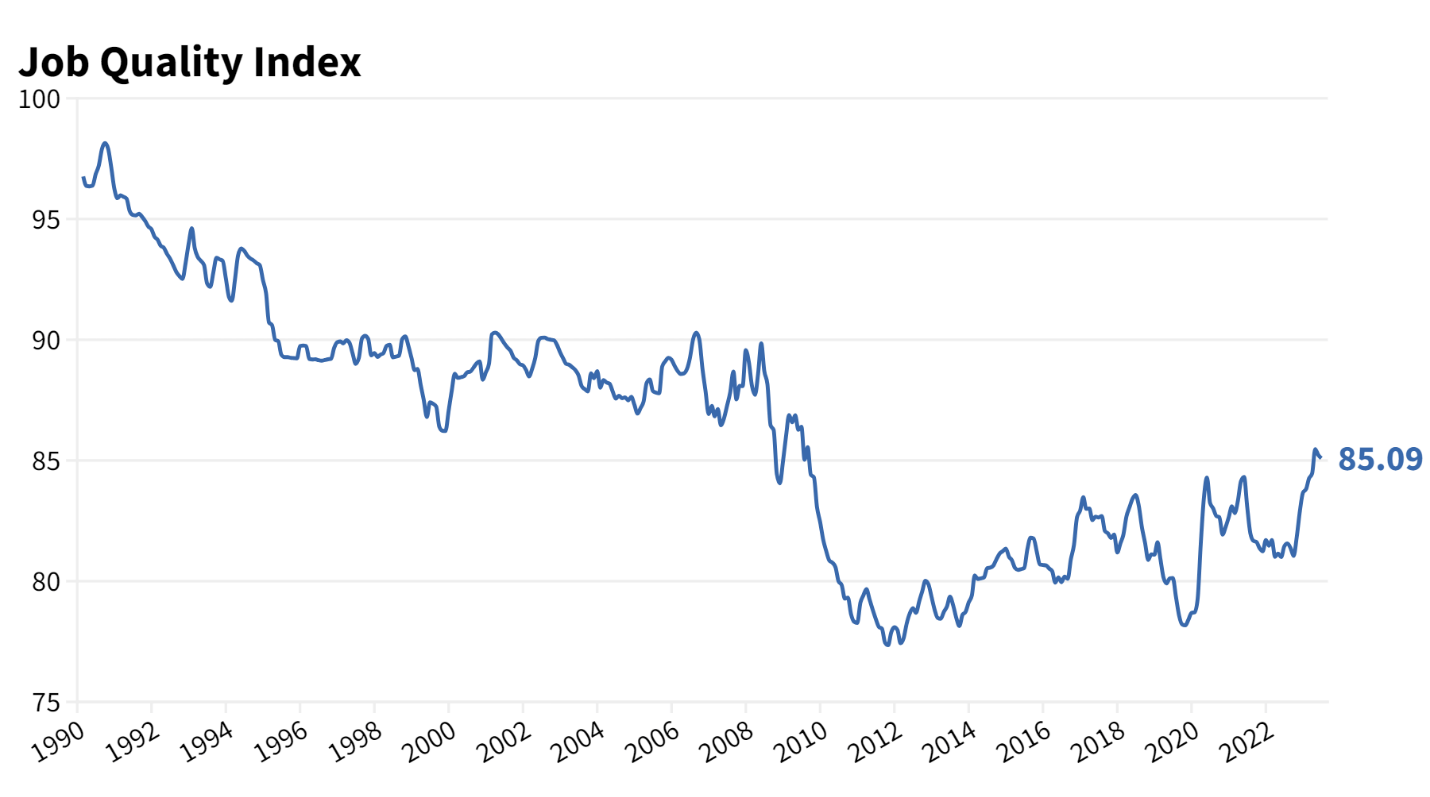WASHINGTON — The Coalition for a Prosperous America (CPA) today announced that the U.S. Private Sector Job Quality Index (JQI) for July was 85.09, down 0.41% from June. After several months of strong, high-quality job growth in the first half of 2023, the decline of the index reflects that job growth in the economy is slowing.
Most of the job growth in July was once again from low-quality jobs that pay below the average wage in the health care and social assistance industry. Health care and social assistance added 88,400 jobs in July, but only 21,010 of these jobs are of high quality with above average wages and hours worked. The accommodation and food services industry also added 55,100 low-quality jobs in July. Among industries adding high-quality jobs in July were wholesale trade (21,700 jobs) and professional and business services (11,000 jobs). After strong high-quality job growth in the first half of the year, recent months have seen most of the job growth in low-wage, low-hour sectors, which is why the index has ticked down slightly.
The average weekly wage for production and nonsupervisory workers in June was $978.62, an increase of 0.27% from June and up 3.82% over the past year. The pace of wage growth is also slowing some but remains above the rate of inflation of 3.2% as workers are finally gaining back some lost purchasing power after two years of rising prices.
The Bureau of Labor Statistics (BLS) reported overall job gains of 187,000 in August and an unemployment rate of 3.8%. Manufacturing employment also increased by 16,000 jobs in August to 12.997 million total manufacturing jobs after several months of flat job growth in the industry. Hiring in construction remains strong and added an additional 22,000 jobs in August. Goods producing jobs comprised 20% of the private sector job growth in August due to the increase in manufacturing employment on top of already strong job growth in construction.
The Job Quality Index measures job quality for U.S. production and non-supervisory workers by comparing workers’ weekly wages to the mean weekly wage for all non-supervisory workers. Those jobs above the mean are classified as high-quality and those below the mean are low-quality. The index is calculated by dividing the number of high–quality jobs by low–quality jobs. An index of 100 means the number of high-quality production and nonsupervisory jobs is equal to the number of low-quality jobs. An index below 100 means that the economy includes more low-quality than high-quality jobs.
Over the past three decades, the JQI declined because the U.S. economy created more low-quality jobs than it has high-quality jobs. As shown in Figure 1, the JQI is down 12.1% from 1990 illustrating the disproportionate growth in low-wage, low-hour jobs.
Figure 1. Job Quality Index 1990-2023














